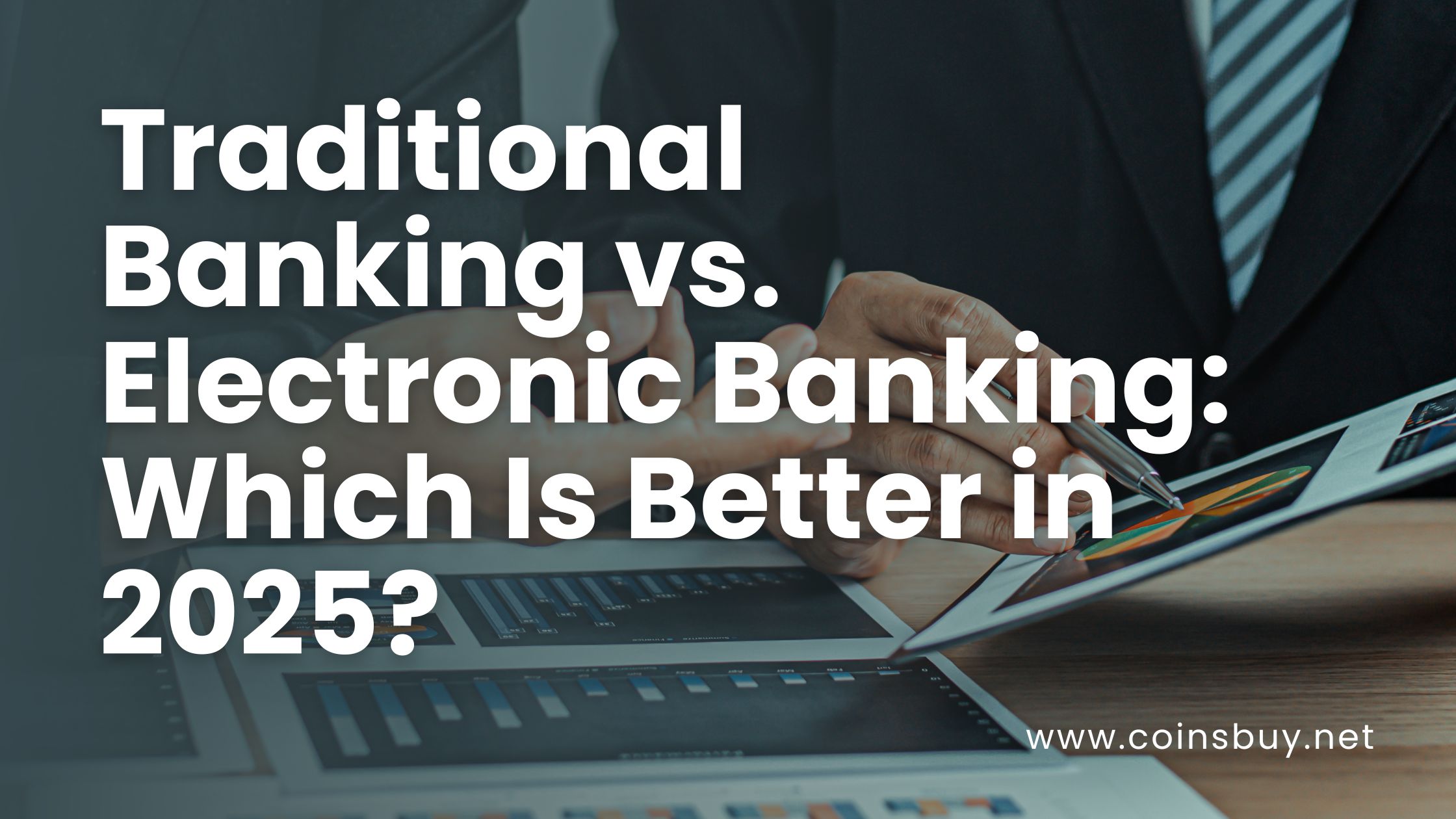Introduction
Banking has undergone a dramatic transformation in the past two decades. While traditional banking still exists in physical branches, electronic banking has revolutionized how we manage money—allowing users to bank from anywhere in the world.
So, how do these two methods compare in 2025? What are the key benefits and risks of each? This article breaks it down clearly so you can make an informed choice based on your lifestyle, priorities, and risk tolerance.
What Is Traditional Banking?
Traditional banking refers to in-person services at brick-and-mortar branches. Customers visit physical locations to deposit money, speak with bank staff, open accounts, and access safety deposit boxes.
✅ Key Features of Traditional Banking:
- Face-to-face interaction with bankers
- In-person cash withdrawals and deposits
- Immediate access to documents and services
- Physical infrastructure for secure transactions
- High sense of security and accountability
What Is Electronic Banking?
Electronic banking—often referred to as online banking or digital banking—allows customers to access financial services via the internet or mobile apps. Instead of visiting a bank, users manage their accounts using a laptop or smartphone.
✅ Key Features of Electronic Banking:
- 24/7 access to bank accounts
- Online fund transfers, bill payments, and deposits
- Mobile banking apps with smart tools
- Lower fees and often higher interest rates
- Access from anywhere with an internet connection
Advantages of Electronic Banking
1. Convenience & Accessibility
Online banking allows users to manage finances anytime and anywhere. Whether it’s a holiday, weekend, or late night, you can log in and:
- Pay bills
- Transfer funds
- Check balances
- Review statements
According to FDIC data, 96% of U.S. households were banked in 2023, and a growing majority prefer managing finances digitally through mobile or web platforms. (fdic.gov)
2. Time & Cost Efficiency
Electronic banking eliminates the need for travel, queues, envelopes, and stamps. It saves time and often comes with:
- Fewer service fees
- Discounted loan application processes
- Higher interest rates on savings
Many digital-only banks now offer zero-fee checking accounts and free e-statements—especially appealing to younger, mobile-first customers. (fdic.gov)
3. Advanced Financial Tools
Most digital platforms offer budget trackers, financial goals, automated savings, and even investment insights—helping users make informed money decisions with ease.
4. Paperless Banking
Monthly statements, transaction histories, and tax forms can be accessed and downloaded digitally, reducing paper clutter and promoting sustainability.
Risks and Limitations of Electronic Banking
Despite its benefits, digital banking carries certain cybersecurity concerns:
- Phishing scams targeting user login credentials
- Account hacking from weak passwords or unsecured Wi-Fi
- Identity theft due to data breaches or malware
The Identity Theft Resource Center reported that identity fraud surged significantly, with new AI-enhanced scams spreading rapidly. (theguardian.com, idtheftcenter.org, idtheftcenter.org)
Advantages of Traditional Banking
1. Human Interaction
Some customers value in-person interactions. Talking to a banker directly fosters trust and may simplify complex transactions.
2. Physical Cash and Document Handling
You can withdraw sizable cash amounts, verify documents, access notaries or safe deposit boxes—services still exclusive to physical branches.
3. Immediate Trust and Security
Physical banks are secured with guards, surveillance, and vaults. Depositors can personally see their funds handled securely.
Risks and Limitations of Traditional Banking
- Limited operating hours (no nights, weekends, or holidays)
- Possible wait times and travel requirements
- Generally higher account maintenance fees
- Physical presence needed for most services
Though robberies are rare, physical theft remains a potential threat despite strong in-branch security.
Traditional vs. Electronic Banking: Quick Comparison
| Feature | Electronic Banking | Traditional Banking |
| Accessibility | 24/7 access via apps or browser | Limited to branch hours |
| Cost & Fees | Generally lower | Higher service charges |
| Customer Interaction | Digital (chat/email) | In-person with staff |
| Fraud & Identity Theft Risk | Higher cyber threats | Lower cyber risk, but some physical risk |
| Physical Services Access | Limited support | Full suite (cash, notarization, etc.) |
| Account Setup Convenience | Quick, online sign-up | In-branch visits required |
Which One Is Right for You in 2025?
✅ Choose Electronic Banking if you:
- Need fast, flexible access to your accounts
- Travel often or work remotely
- Want automation in budgeting and bill paying
- Are OK with basic cybersecurity precautions
✅ Choose Traditional Banking if you:
- Prefer personal relationships with bank staff
- Need to handle large sums of cash or documents
- Are concerned about digital threats
- Pragmatically value in-person banking
Hybrid Approach: Best of Both Worlds
Many savvy consumers combine both methods:
- Routine management happens online
- Advisories, loans, or notarized needs are handled in branches
Conclusion
Both traditional and electronic banking have valuable roles in today’s finance landscape. Your decision should align with your priorities around convenience, cost, security, and personal service. In 2025, hybrid banking—leveraging digital tools while maintaining branch access—often proves the most effective and flexible solution.
References
- FDIC. FDIC Survey Finds 96% of U.S. Households Were Banked in 2023. 2024. (economictimes.indiatimes.com, fdic.gov, idtheftcenter.org, idtheftcenter.org, techradar.com, fdic.gov)
- FDIC. National Survey of Unbanked and Underbanked Households. 2024. (fdic.gov)
- Self Inc. Digital Banking Statistics. 2025. (self.inc)
- Bankrate. Digital Banking Trends in 2025. (bankrate.com)
- Identity Theft Resource Center. 2025 Identity Theft Trends & 2024 Data Breach Report. (idtheftcenter.org)











